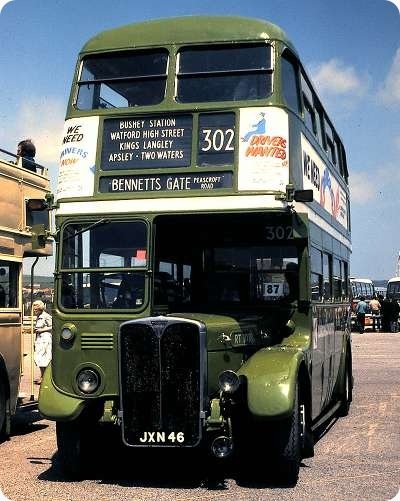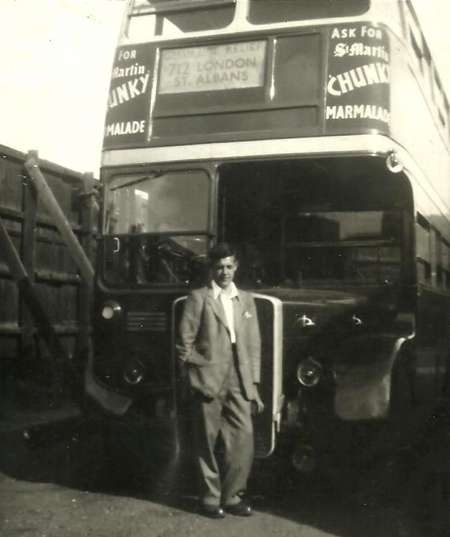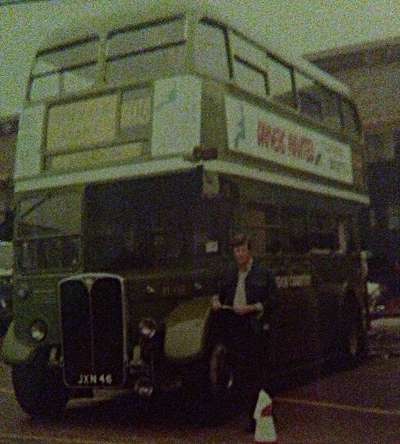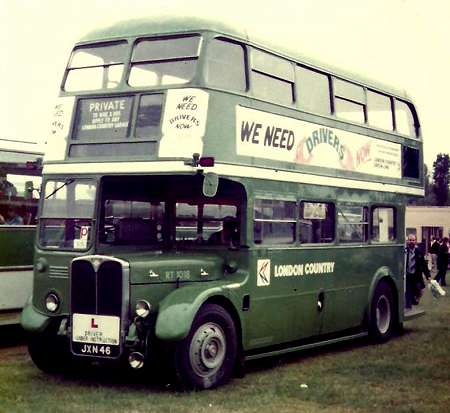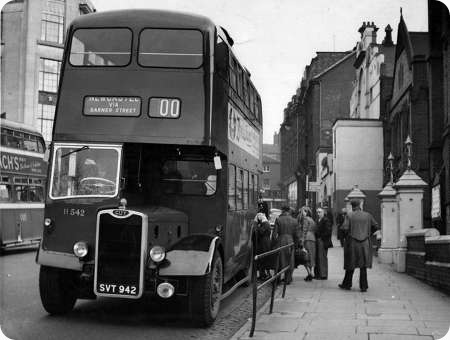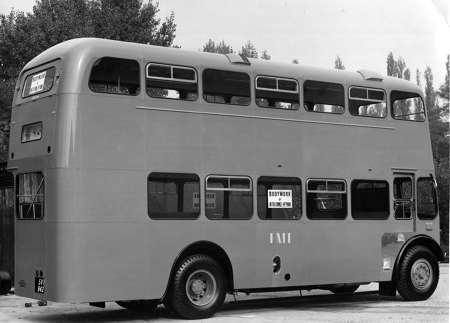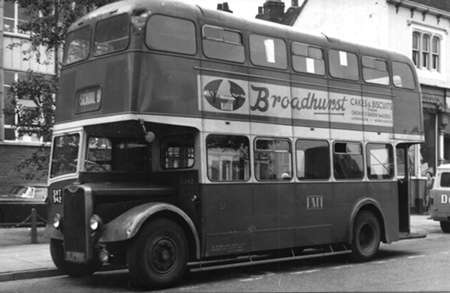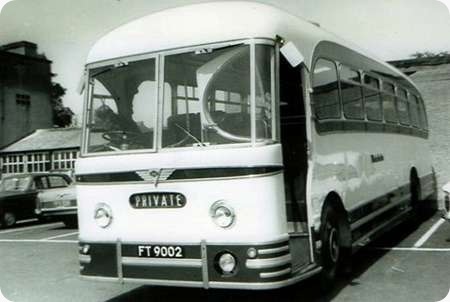
Wakefields Motors
1955
AEC Reliance MU3RV
Weymann C41F
Am I in a minority, or was the Weymann Fanfare one of the most handsome coach bodies ever built? Whatever chassis they were on they looked exactly what they were, well designed, well built and comfortable. To me they fell into the same category as the first Burlingham Seagulls, nothing flash, brash or arrogant, just a quiet understated elegance, and any subsequent ‘improvements’ usually took the edge off something that was right in the first place. The Northern General Transport group had 16 in total, all delivered in 1955: 197 to 202 are from the Wakefields fleet; Outwardly they all looked pretty much the same, but the six Wakefields versions, FT 8997/9002, 197/202, were C41F on an AEC MU3RV chassis, they were mainly used for private hires, day tours and excursions. By contrast, the 10 Northern ECN 680/9, 1680/9; were C37F on a Guy Arab UF chassis with Gardner 6HLW engines, initially they were used primarily for extended tours and continental work, hence the smaller seating capacity. Both types were reliable workhorses and lasted well, I think the last ones were withdrawn in 1971. When not being used for tours the Guy’s were frequently to be found earning their keep on the express services from Newcastle to Liverpool or Blackpool. This was the pre motorway era, and the route to Liverpool in particular involved a long hard slog over the Pennine’s, so they didn’t exactly have an easy life. Percy Main did not have any express routes, but at busy times Wakefields coaches with P/M crews, could often be found displaying ‘on hire to Northern’ stickers, and working Northern express routes as duplicates. The AEC’s were certainly not underpowered, and if anything they were a bit livelier than the Guy’s on the flat, but once you hit the hills, it wasn’t long before the Guy would show you a clean pair of heels.
Photograph and Copy contributed by Ronnie Hoye
23/06/13 – 08:39
Yes, Ronnie, you may very well be in a minority, but you are most certainly not alone. The only question to me is which of the four designs was the most elegant: this one, the Harrington Cavalier, the early Seagull, or the one Leyland produced for the Royal Tiger. One model railway forum of which I am a member has regular polls on different topics: I wonder!!!!!!!
Pete Davies
23/06/13 – 09:31
Well, as you know, Ronnie, I’m a Seagull, Fanfare AND Dalesman fan.
i) Seagull
ii) Cavalier/Grenadier
iii) Fanfare
iv) Dalesman
David Oldfield
23/06/13 – 14:51
North Western took the prototype which had been exhibited at the 1954 Commercial Motor Show with a long rectangular destination panel next to a three track number indicator in the same panel as the vehicle above. Later vehicles had the indicators removed to the roof line.
I agree that from most aspects the body was was a handsome. well designed and well built. My only gripe would be the heavy rear corner pillars which, combined with the curve to the roof line, from the rear made the vehicle look very round shouldered.
Phil Blinkhorn
23/06/13 – 17:21
I’m another Fanfare fan, and especially of the Northern General Guys, which were my absolute favourite coaches on the Liverpool service.
Peter Williamson
25/06/13 – 07:42
Ronnie, I must also add my name to the list of ‘Fanfare Fans’. Your comments about their appearance are spot on, and as a youngster I always felt privileged on seeing one glide through Harrogate on express work. They always looked very smart in Northern’s fine cream and rich red livery, and I can see one now in my mind’s eye, circumnavigating the floral roundabout from Station Parade onto tree-lined Victoria Avenue, and then off into in the summer sun. Wonderful. In those far off days, to my young eyes the Fanfare was one of those coaches that was not only beautiful to look at, but exuded a sort of ‘cuddliness’ with its curves. Another one in that class was the Burlingham Seagull, closely followed by the Bristol LS coach, with its bewhiskered Bristol-ECW badge on the front. Some modern bus and coach designs do try to look friendly with their ‘smiley’ frontal styling, but this just looks like an ‘add-on’ somehow. The Fanfare looked the part and did it without even trying.
Brendan Smith
25/06/13 – 11:51
I liked the Fanfare too, but the rear end was dreadfully old fashioned for a design introduced in 1954 – and compare it to the contemporary Duple Elizabethan which would have won hands down on looks. Duple, of course, only made the Elizabethan for two years before replacing it with the first version of the Britannia (and its centre-entrance sister the Brittanic), which to my eyes were simply dreadful. I much preferred the later versions of the Britannia built from 1959-62. Plaxton designs in the early years of Fanfare production were also fairly abysmal, especially the front entrance version of the Consort, and Harrington’s Wayfarer III/IV were an acquired taste – the front dome just looked wrong compared to the rest of it. And as for Yeates’ Europa and the later Burlingham Seagulls, the word "abominations" seems appropriate!
I may be eccentric (is there any doubt?) but my own favourites in coach design between 1951 and 1958 are:-
1) The original centre entrance Burlingham Seagull
2) The Whitson Grand Prix
3) The Bellhouse Hartwell Landmaster (especially the ones with the breast shaped headlight fairings!)
4) The Windover Kingsway
5) The ACB Coronation Land Cruiser
I’d also give an honourable mention to the Trans-United Brabazon (as supplied to Yelloway on Regal IV and Royal Tiger chassis)
As for the Harrington Cavalier, although an attractive design in 1960, it was rapidly overtaken by the stunning good looks of the (30ft long versions) of the Panorama model produced from 1961-64. Longer versions of this design had a distinct droop at the rear end which spoiled the effect.
When we’ve finished talking about underfloor engined coach designs, who would agree with me that Gurney Nutting’s fully-fronted Mertonian design on half-cab style chassis was impressive? I’ve also seen it described as monstrous!
Also, just a quick comment to Phil – the Fanfare prototype supplied to North Western (FDB 570) was actually delivered to NWRCC with the standard Fanfare blind display (as above) and was modified to show a separate route number at a later stage. North Western also modified the blind apertures on their 1958 Harrington Wayfarer IVs to suit standard blinds.
Neville Mercer
25/06/13 – 17:00
Very rare I disagree with Neville but I don’t think the Windovers gelled and the Bellhouse Hartwell was spoiled by the protuberances. Couldn’t agree more about Plaxton. The half-cab/full-front design was classic followed by years of "Oh gawd, what have they done now!?" Along with SUT (of blessed and bitter memory) I was a huge Plaxton fan in the period 1960 – 1982. [They then lost the plot in the Paramount years and the quality dropped to that of Duple just before their demise in 1989. They say the new ones have regained the quality: time will tell.] Question for our esteemed expert (Neville). Don’t you think the Trans United Brabazon was a rip off of the Landmaster?
David Oldfield
25/06/13 – 17:01
Another Fanfare fan here too Ronnie! I loved the Sheffield ones and for me the addition of a route indicator was not detrimental. These were used on the routes into the Derbyshire Peak District and one’s destination arrived all too soon if you were on one of these! However – my twelve points go to the Seagull, of which I rode the SUT classics, Ten points to the Fanfare, My eight points to the Grenadier / Crusader with Grey Cars being prime examples for me, and, like David O, the Dalesman would be next. Of the Duple designs, top contender is the "butterfly" front.
Les Dickinson
26/06/13 – 06:00
I can understand your dislike of the Kingsway, David. It had a certain "Marmite" quality to it. To me the design brings back memories of my first visit to Scarborough in the early 1960s where I marvelled at the rear-entrance examples operated by EYMS and YTC. I was heavily into sci-fi at the time, and something about the Kingsway shouted "the future was here….and now it’s gone", a bit like TSR2 if you remember that aircraft! The Landmaster, on the other hand, I’ll defend to the death. Mixed martial arts?
On the front-engined front, I think that most of us would agree with Les about the butterfly front Super Vega of the 1956-58 variety. A genuine classic and much better than the final two versions which (to me) always looked as if they’d been eating too many pies.
Neville Mercer
26/06/13 – 06:00
Some things just seem to look right regardless, the Fanfare being a classic example, but obviously some liveries look better than others, and what looks good to some is hideous to others. Keep it plain and simple seems to be the secret. Just for fun and in no particular order, here is my selection for 50’s mid 60’s classics. The following are all on an under floor chassis,
The original centre entrance Burlingham Seagull
ECW as per Bristol LS or Leyland LUT ‘United coach livery for preference’
Weymann Fanfare
Harrington Cavalier
Roe Dalesman
All Leyland Royal Tiger
Duple Roadmaster
and the pre ‘Y’ type Alexander used by many of the Scottish operators, I believe North Western also had a few of them. As for front engine chassis?
Duple Butterfly front, and a strange one perhaps, the beadle rebodies used by many BET group companies
Ronnie Hoye
26/06/13 – 06:00
Neville, if your taste in coach body-work is mirrored by your taste in ladies then you must have dated some real rough specimens in your time! But, can we take it that Mrs Mercer had/has "Bellhouse Hartwell Landmaster" attributes? My favourites?
1) Harrington Cavalier;
2) Harrington Grenadier with Cavalier front panels;
3) Harrington Grenadier;
4) any other possible combination of Grenadier/Cavalier bits I may not currently recall/know about;
5) the last real ECW coach body of the early 1970s;
6) the B51(?) ECW DP body of the late 1980s – can this sneak in as a coach? (didn’t some of them have single piece doors anyway? which would class them as a coach in my opinion);
7) that Willowbrook "cut-price Plaxton/Duple" DP effort of the same period – the one that no NBC subsidiary seemed to want, but which to me seemed to have an elegant simplicity and authenticity about it! Mrs Rushworth? alas in the last ten years gone from Cavalier to Yeates Riviera – but don’t tell her I said that!
Philip Rushworth
26/06/13 – 11:46
Gentlemen, I know that even the mention of Midland Red has many of you running to the barricades, but I would like to nominate their C5 motorway coach. Considering the prototype came out in 1958, it was a mould-breaker which set the standard for high-speed coaching. No doubt many will consider them to be little more than dual-purpose buses but, for me, so were the all-Leylands and Duple Roadmasters.
Paul Haywood
26/06/13 – 11:47
Phillip, I suspect that you were bottle-fed as a baby! And are you really saying that all of your favourite coaches pre-1970 were Cavalier/Grenadier variants? I notice that you don’t list any Crusader or Legionaire models although these had many similarities to the blessed Cavalier. Speaking of which, why has nobody produced a decent 1/50 or 1/76 scale Cavalier? EFE’s version was done on the cheap and it shows – it’s inaccurate for almost every operator except Yelloway because of the lack of front-dome roof-lights. And on the Yelloway version they screwed things up by the completely inaccurate destination and "via" blinds. It’s still hard to believe that somebody at EFE thought that "Rhyl" was spelled that way! If EFE weren’t so reluctant to admit their many glaring errors (and to get better "experts" to check their final artwork), they might have made amends by re-releasing their 119xx casting in Yelloway livery but showing accurate blinds for the Torquay or London routes. And as for their "Grenadier" model so much is wrong with it that it’s little better than a toy.
Neville Mercer
26/06/13 – 11:47
The Fanfare was as many have said an attractive understated coach The basic design was spoilt when Weymann added a barrel windscreen and dubbed it the Castilian
Chris Hough
27/06/13 – 07:06
Neville, perhaps I’m more forgiving, but – looking at the display cases above my desk – I’m just glad that in the last 25(?) years I’ve been able to build up a collection of ready-built models from LAD-cabbed Albion trucks to safari-wrapped EYMS Wrights . . . although I do agree that some of the errors have been unforgiveable – "West Yorkshire" on the back of OOCs/EFEs(?) OB and the wrong colour red on OOCs Huddersfield CVG (and on . . . and on . . . until we get to the white tween-decks band on EFE’s Bradford RT!). Pre-70 coach-wise I’ve done some thinking: Alexander produced a nice design, of which Barton took some; Y-type with a single door (Premier Travel, Venture, Eastern Scottish,); ECW produced functional products – but not that MW body with the stepped waist-rail, and the first RE body was behind its time (Lodekka grille on a coach?) when first released. Perhaps I was a bit tight Neville, but I’m not going to budge any further. And yes, bottle feeding was the rage in the 1960s.
Philip Rushworth
28/06/13 – 06:20
I must agree, it certainly is a handsome coach. We had at least 1 in Sheffield,(reg ???? WB) although it may have been a Leyland. Again used on the 8&9 routes I used at the time. I am not familiar with some of the other styles mentioned, but imagine it stood alongside what other buses would look like, in the mid 50s,in Sheffield, it must have been the best looking by far.
Andy Fisher
28/06/13 – 06:22
I worked for Boddys Bridlington from 1967 who had a fleet of older coaches for seasonal use as well as the modern fleet we had some Fanfares FDB 570, AHD 820, NCY 624,PWN 64,PWN 65,
Ken Wragg
28/06/13 – 14:18
Philip, I quite agree with all the model errors you list, and – like you – I’m pleased to live in a world where there’s a wider variety of model buses on offer than a Routemaster and an Atlantean with imaginary bodywork! But that can’t let EFE off the hook when they make really basic errors that any die-cast equivalent of a proof-reader should have spotted a mile away. They do, after all, boast about the accuracy of their models, which entitles us to whinge when they get it seriously wrong. Especially given that they’re the ones making money and we’re the ones spending it!
Incidentally has everyone noticed that Oxford Die-cast are planning to release a Fanfare in 1/76? I’m still waiting to see how accurate the colours are on their Ribble all-Leyland Royal Tiger coach given the seriously wrong shades shown in their current image on line. The second release of the Royal Tiger (Southdown) seems to have the same front dome as the Ribble one, whereas in reality the two versions were totally different. But I live in hope of some decent coach models. Can somebody prod OOC into releasing more of their excellent Mk 1 Seagull?
Speaking of the Seagull, a slightly late reply to David because I missed the original comment on first reading (senile?). I can see what you mean about the TU Brabazon being derivative, but it seems to me like a handsome mix of BH (the front end, minus appendages) and Burlingham (the side view aft of the cab). I imagine that all of these Lancashire coachbuilders kept a close eye on each other’s designs.
Neville Mercer
01/07/13 – 07:33
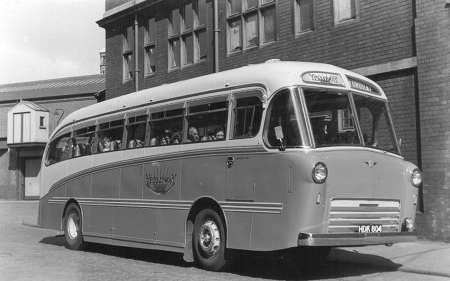
Just so that people know what David O and I are referring to, here is a Yelloway example of the Trans-United Brabazon. (photographer unknown – print via GMTS Archive)
Neville Mercer
01/11/13 – 07:54
One AEC Reliance 470 that ! have fond memories of is 1632 NO. It was new to Frank Harris of Grays with a Duple body. Following an RTA, it was rebodied in 1962 with a Harrington Cavalier C43F body. The Coach firm from Bugbrooke Northamptonshire who provided the Coaches I went to school on acquired it in (I think) late 1974. The Harrington standard seats are the most comfortable that I have EVER sat on. It was a smashing vehicle to ride on. It is a crying shame that this lovely Coach is now in that great coach park in the sky.
Stemax1960
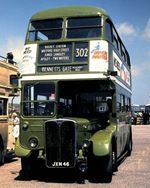 Vehicle reminder shot for this posting
Vehicle reminder shot for this posting